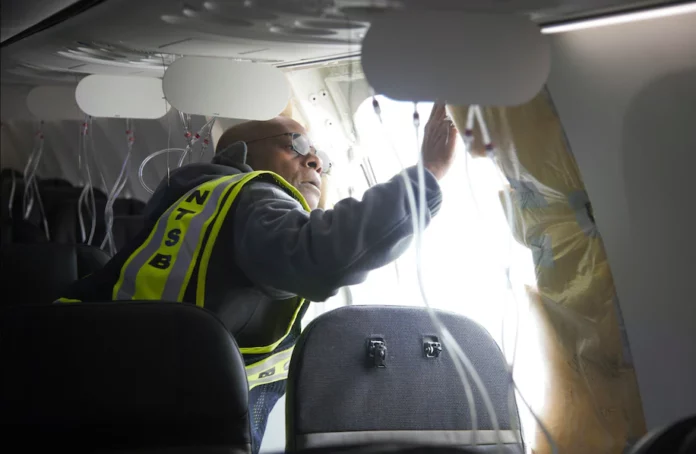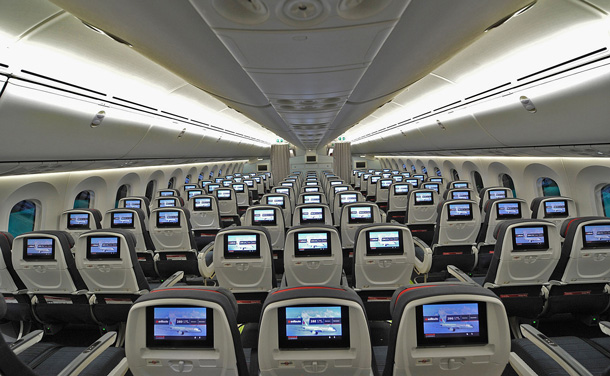The door plug from an Alaska Airlines flight was discovered in a schoolteacher’s backyard in Portland, Oregon. This follows the emergency landing of the Boeing 737-9 Max airplane due to explosive depressurization.
The incident, which occurred last Friday, led to significant interior damage to the aircraft.
It has also now led to the grounding of Boeing 737-9 Max aircraft.
Prior to this incident, the plane had shown signs of pressurization issues. Jennifer Homendy, Chair of the National Transportation Safety Board (NTSB), revealed in a Sunday press conference that the aircraft’s auto-pressurization warning light had been activated on three separate flights, dated December 7, January 3, and January 4. Following these alerts, maintenance procedures including tests and resets were conducted. The plane was also restricted from flying to Hawaii as a precautionary measure. However, a request by Alaska Airlines for a more comprehensive examination of the issue was not fulfilled before Friday’s emergency.
The exact link between these earlier warnings and the recent accident is still unclear, as Homendy pointed out the possibility of a malfunction in the warning system independent of the plane’s pressurization mechanism.
Flight 1282, bound for Ontario, California from Portland, had to make an abrupt return to the airport when the door plug, a non-essential exit covered by panels, detached from the plane shortly after takeoff.
The detachment caused a loud noise and introduced cold, strong winds into the cabin. The incident also led to the cockpit door flying open, impacting the first officer and briefly dislodging her headset. Communication challenges ensued, described as ‘violent’ by Homendy, based on interviews with flight attendants.
The plane, carrying 171 passengers and six crew members, was significantly damaged, with interior trims, panels, and insulation torn off, affecting at least 12 rows. Notably, the structure of the aircraft remained intact. Homendy expressed her belief that the passengers must have been terrified during the ordeal.
A key setback in the investigation is the absence of data from the cockpit voice recorder, which erases itself every two hours. This has prompted Homendy to urge the Federal Aviation Administration to extend the overwrite time to 25 hours, aligning with international standards.
This incident has brought renewed attention to Boeing, particularly after the discovery of manufacturing issues with the 737-9 Max model. Consequently, the Federal Aviation Administration has grounded all 737-9 Max planes with the same door plug part for inspection, impacting 171 planes across several airlines.
Boeing CEO David Calhoun has postponed a company leadership summit and announced an organization-wide safety meeting on January 9, emphasizing the need for transparency and safety in response to the incident.
The NTSB continues its thorough investigation, calling on locals to assist in locating any fallen parts and checking security footage. The extensive inquiry underscores the seriousness of the incident and Boeing’s ongoing challenges with the 737-9 Max model.






